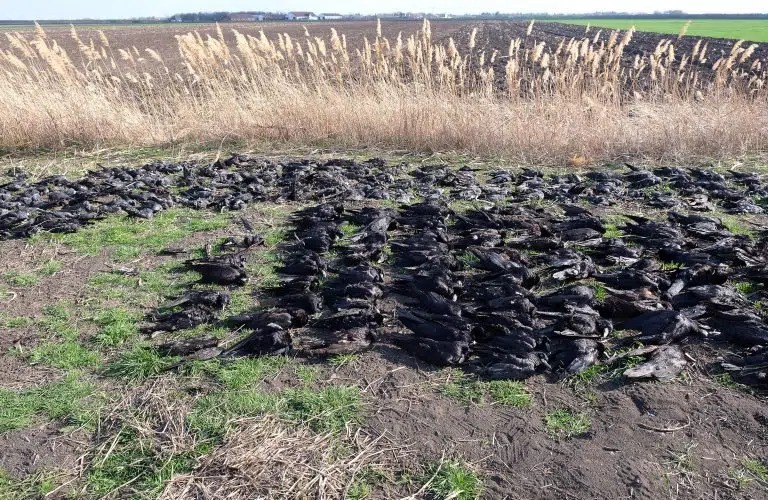Serbian corvid poisoning threatens birds of prey
More than 800 dead corvids have been found scattered near a village in northern Serbia in an apparent mass-poisoning incident.
At least 434 Rooks and 373 Jackdaws, both protected species in Serbia, were among the victims.
Local beekeeper Ranko Samardžija stumbled upon a number of dead birds along a dirt road north of Nakavo while tending to his hives. He shared a video on online, which caught the attention of the Belgrade Protection and Bird Protection and Study Society of Serbia (BPSSS) before he removed the post.

Some of the corvids were taken for forensic analysis, but the majority had to be buried in a pit on the outskirts of the village (BirdLife).
Aware that a pair of Eastern Imperial Eagles had established a territory nearby, BPSSS was concerned that the number of dead corvids posed a threat to the globally Vulnerable birds of prey. Milan Ružić, executive director of the society, contacted Samardžija and sent out a field crew to assess the threat, as well as contacting the police.
Ružić said: "I sent a notification to the Institute for Nature Conservation of Vojvodina Province, as well as to the prosecution office in Kikinda and the Environmental Crime Police Unit of the Ministry of Interior affairs informing them of the suspicions concerning a mass poisoning incident near Nakovo."
The incident gained widespread attention, with a high number of police officers, veterinarians and communal service officials visiting the scene. The dead birds, scattered across a 2-km radius, were counted before being taken away in black bags. Some birds were taken for further analysis to establish the cause of the mass fatality, but the majority were disposed of in a nearby pit.
Stefan Prekajski, a biologist with BPSSS, warned that the crash in the local corvid population could lead to a surge in rodent numbers, causing crop damage and potentially affecting Long-eared Owl populations in Serbia.
He said: "Rooks, Hooded Crows and Magpies play a vital role in this ecosystem, especially in the agricultural areas, as they are the main nest builders, which are later inhibited by owls and kestrels. These birds of prey in turn play a critical role in controlling the rodent population. When the crow numbers decline, birds of prey are left without nesting sites, leading them to abandon the habitat. This absence triggers a surge in the population of field mice, rats, and voles, resulting in significant crop damage."

